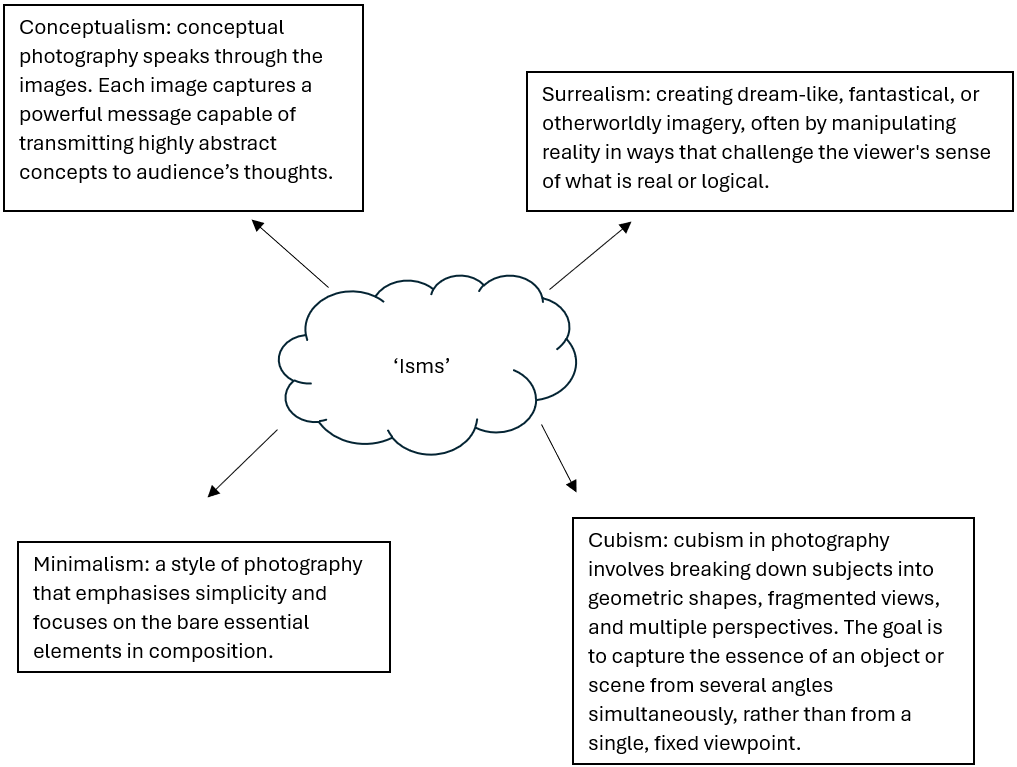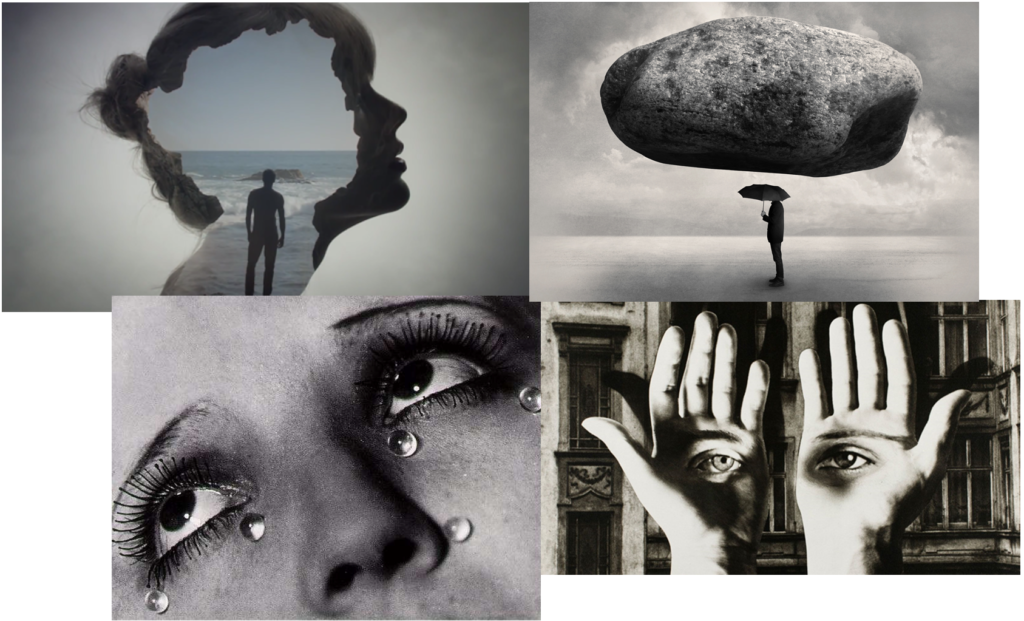Examples of ‘isms’:

Surrealism:
Surrealism was founded in Paris 1924, by the poet Andre Breton, during the First World War when the horror and violence experienced by so many had shifted perceptions of sanity and reality. Surrealism is known to be irrational and subversive in art and explicitly preoccupied with spiritualism. It aimed to create art that emerged directly from the unconscious without being shaped by reason, morality or aesthetic judgements. In photography, surrealism challenges the notions of normality through the power of photography and experimentation. Overall, surrealism in photography has the power to unlock the imagination, which puts it in the tradition of Romanticism. The Surrealist impulse to tap the unconscious mind, and their interests in myth and primitivism, went on to shape many later movements, and the style remains influential to this today.
Examples of Surrealism photography:

Some key techniques used in surrealist photography include:
- Double Exposure: Superimposing two or more images to create a layered effect, often symbolizing a blending of different realities or experiences.
- Manipulated Imagery: This includes physically altering negatives or prints, or using darkroom techniques to distort the final image.
- Strange Juxtapositions: Placing objects or people in unexpected or impossible contexts, creating a sense of tension or surprise.
- Dreamlike Lighting: Using lighting to create an eerie, otherworldly atmosphere that enhances the surreal quality of the image.
